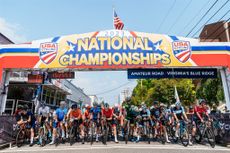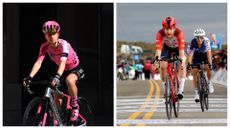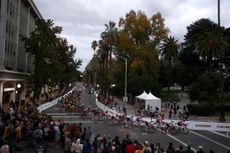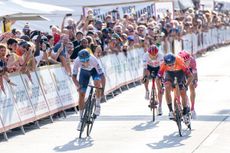American stars shine abroad while domestic races dwindle — What does the future hold for US cycling?
It was an incredible year for American riders on the WorldTour yet road racing in North America is on the decline.

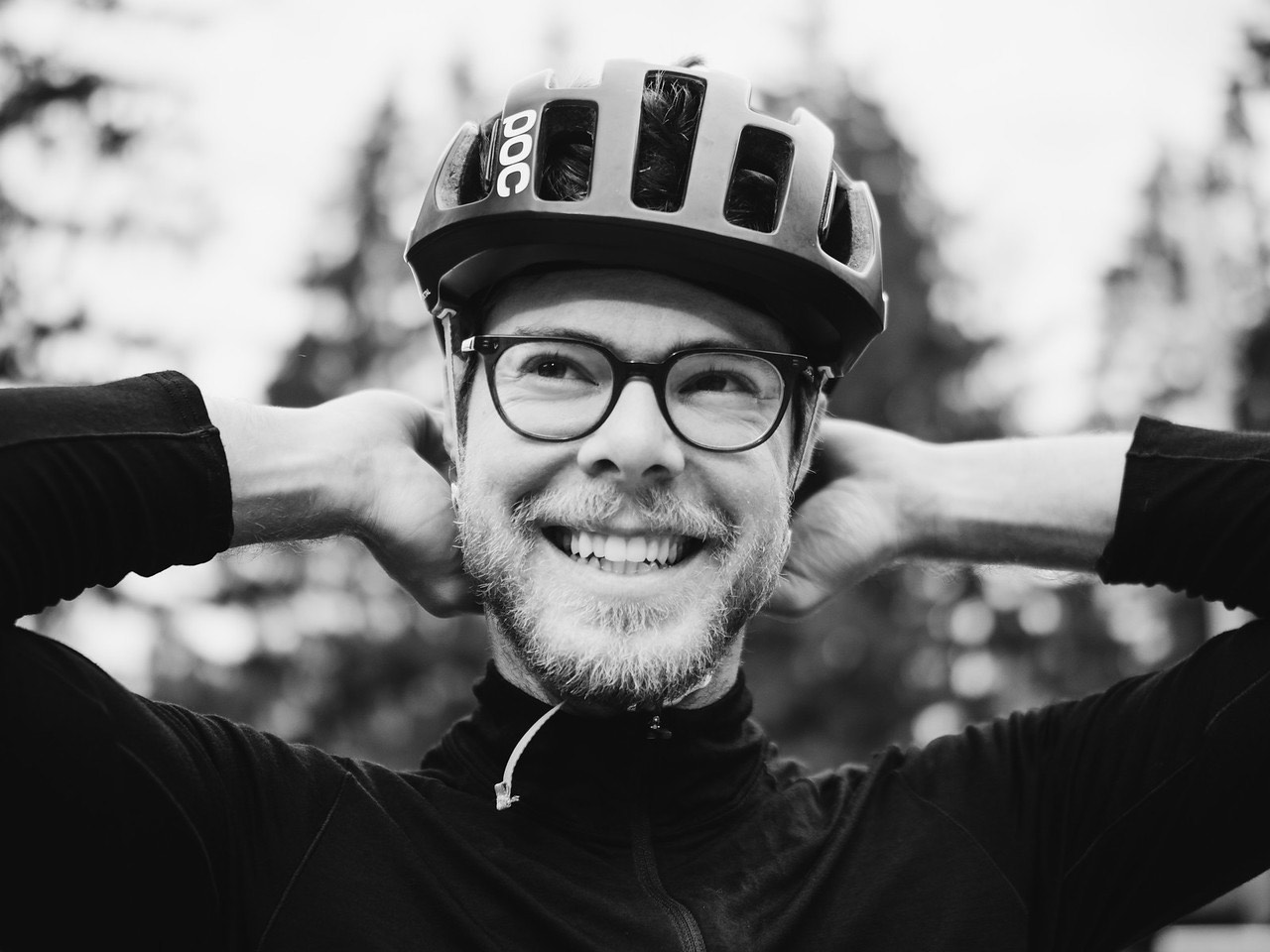
What a season it was for American riders on the WorldTour. Sepp Kuss won the Vuelta a España. Neilson Powless wore polka-dots at the Tour de France and has been ranked in the top 20 in the UCI rankings for most of the season. Matteo Jorgenson has been racking up young rider’s jerseys all year long and is headed to Jumbo-Visma, the top team in the sport, on a three-year deal.
These are U.S. riders with world-class talent achieving world-class results.
These riders and their contemporaries came up through the ranks of American road racing, developing steadily and showcasing their talent to WorldTour teams one race at a time. But many of the races they used as stepping stones to reach the upper echelons of the cycling sport are now gone. Will results like these be possible for younger riders without the same pathways into the sport? And what does this mean for the future of road racing in the U.S., and North America more broadly?
The WorldTour remains the pinnacle of road cycling, and the path to get there remains very challenging. Riders need races in order to develop the engines and experience necessary to reach the top levels of the sport.
The toughest loss to U.S. cycling is undoubtedly the Tour of California, which ran from 2006 until 2019. It offered a viable alternative to the Giro d'Italia as a spring calendar target, and brought top international riders to the U.S., introducing them to Americans and America to them.
In the last few years many international professionals have continued to visit California to train, including Geraint Thomas, Chris Froome, Romain Bardet, Peter Sagan and others, directly as a result of their experiences racing the Tour of California (ATOC). The race also offered a critical stage for young U.S. riders to showcase themselves on home turf against international stars. Not only were U.S.-based teams invited but a composite Team USA provided additional spots for riders to participate.
Other losses of note include the Tour of Utah (2000-2019) and USA Pro Challenge in Colorado (2011-2015). These two races brought high-level cycling to the U.S. later in the season, after the Tour. They showcased American culture, for better and worse, as well as the unique geography of these regions. And those aren’t the only ones either: the Philly Cycling Classic, the Tour de ’Toona, the Tour of Alberta in Canada, and more have gone by the wayside in the last decade.
So why is it that these races have gone away?
Clearly, given the timeline of some of the cancellations, the Covid-19 pandemic had an impact, but it likely only hastened the demise of races already struggling to operate for financial reasons. Rapidly increasing operating costs and lack of stable sponsorship remain the biggest challenges that races face. Without the culture endemic to the sport’s European heartlands where regions and entire countries help in sharing financial burdens, the onus for race funding and team sponsorship is on private companies, which, unfortunately, can be extremely fickle.
Some of the success of European races is self-perpetuating, i.e. is the Le Tour because it has existed for so long, and this same longevity guarantees attention and interest going forward. Cities in France know what they’re getting when they bid to host a stage start or finish: the eyes of the world.
For other races, those hosting bids and the associated and occasionally substantial sums outlayed can backfire. At the ATOC, for example, cities anecdotally reported fans attending the races but going home for the night, meaning hotels didn’t get booked and restaurants didn’t see extra business. Compared to say, an Ironman Triathlon, or a gran fondo event, the economic impact of a professional bicycle race has a hard time competing with a mass-participation ride or race where many more people are taking part and staying longer.

The Tour of California, which ran from 2006 until 2019. It offered a viable alternative to the Giro d'Italia as a spring calendar target, and brought top international riders to the U.S., introducing them to Americans and America to them.
The other major piece of the puzzle is the cost of road closures. Closing roads and hiring staff and emergency personnel is extremely costly and seems to become more expensive every year. This is also a cultural issue. A lot fewer Belgians get upset about roads closing for the Tour of Flanders than Californians do about major arterials being closed for ATOC. Without the ingrained culture of bike racing, locals see the entire endeavor as, at a minimum, an annoyance, and in some cases as something they actively try to disrupt and cause to fail.
When I spoke with Robin Carpenter (L39ION of Los Angeles) about this phenomenon, he proposed that road races in America could be a cyclical phenomenon: “One of the things I wonder is, does this stuff just come in waves? In the ’80s there were lots of bike races that no one knows about anymore. Maybe it’s on some macrocycle that we just can’t pinpoint right now and in another 10 years this will be the dark ages and we’ll have the Tour of California again, or some other state.”
This is a good observation. Think of the Red Zinger Classic or Tour Dupont; in their day, these were huge races that attracted international fields. And there is a pattern here: American success on the international stage has directly impacted racing domestically. When US riders are winning, interest and sponsorship dollars appear. Greg LeMond won his first Tour in 1986, which invigorated the sport in the U.S. for the decade following. The same can be said of Lance Armstrong’s victories in the early 2000s. It was this popularity that allowed the Tour of California to exist.
So will Kuss’ Vuelta victory similarly bring attention back to U.S. racing or do we need an American in Paris to truly elevate US road cycling?
Currently, the only high level road race in the U.S. is the Maryland Cycling Classic, which finishes in downtown Baltimore and is classified within the UCI’s ProSeries (1.Pro), the second division of races. Other international races in this category include the Volta ao Algarve, Scheldeprijs and the Tour of Britain.
For Euro-based pro teams, even if there is interest in traveling to the U.S., the trip needs to make sense in terms of sponsorship exposure and potential for results. It’s a massive undertaking to bring staff, riders, vehicles and equipment across the world to race. The Maryland Cycling Classic occupies a sensible spot on the calendar just before the WorldTour races in Quebec City and Montreal, which all WorldTour teams are obligated to attend. But it’s hard to justify the costs of coming early to Maryland for only one additional race day. A second race nearby, or someday, a stage race in the Eastern U.S. around the same time could incentivize more WorldTour teams to show up and race in the U.S.
When I spoke with Toms Skujiņš of Lidl-Trek following the Maryland race, he echoed the same idea: “How about we put this race on Saturday, and as there’s a holiday on Monday, we have another race on Monday that’s in Philly. Bring back Philly!” Race winner Mattias Skjelmose, also of Lidl-Trek agreed, “I think [more racing is] how you get more World Tour teams coming, because you can get more points and then the trip is really worth it.”
It’ll be interesting to see if the organizers behind the Maryland Cycling Classic can expand to add in more race days, or if someone else might step in to fill the void during this window in the race calendar, which is concurrent with the Vuelta. The riders want to race, and as seen in Baltimore, teams are sending strong squads with the goal to perform on the only U.S. race day they’ll have all year.
It must also be said that other forms of cycling in the U.S. are thriving outside of the somewhat rigid world of road racing. Gravel racing is largely a U.S.-based pursuit (though it has been and is currently being successfully exported elsewhere) and is attracting racers from all over the world. The American criterium circuit isn’t exactly going gangbusters, but riders are able to make a living racing small loops around and around and around again, all over the country. And NICA, the high school mountain bike league, is growing in participation and coverage every year. Reducing the barriers to competition and increasing cultural awareness bring change, but it’s slow going. At the moment, we may have to wait a few more years for the answers to many of these questions.

Thank you for reading 20 articles this month* Join now for unlimited access
Enjoy your first month for just £1 / $1 / €1
*Read 5 free articles per month without a subscription

Join now for unlimited access
Try first month for just £1 / $1 / €1
Get The Leadout Newsletter
The latest race content, interviews, features, reviews and expert buying guides, direct to your inbox!

Tyler Boucher is a former (and occasionally still) bike racer across several disciplines. These days, he spends most of his time in the saddle piloting his children around in a cargo bike. His writing has appeared in magazines published in Europe, the UK and North America. He lives in Seattle, Washington.
-
 Castelli winter jacket reduced by 44%, Specialized shoes reduced by 50% - here’s my top picks from the January sales
Castelli winter jacket reduced by 44%, Specialized shoes reduced by 50% - here’s my top picks from the January salesBig savings on Specialized S-Works helmets, Vittoria tires, Garmin smartwatches and more
By Luke Friend Published
-
 My Training Space: 'I jump off my bike into the sauna – heat is no longer a limiting factor for me!'
My Training Space: 'I jump off my bike into the sauna – heat is no longer a limiting factor for me!'TT veteran, Ironman and CW reader Keith Murray gives us a tour of his Taylor Swift-resounding garage
By David Bradford Published
-
 Will Sepp Kuss spark a US road cycling revival?
Will Sepp Kuss spark a US road cycling revival?It’s been some 15 years since we saw such an exciting contingent of American riders in the WorldTour; there’s hope their ember can spark a fire in the hearts of American sports fans
By Anne-Marije Rook Published
-
 19 years, 18 Olympic gold medals and 17 world titles: meet the visionary behind the longest running women's professional cycling team in the world
19 years, 18 Olympic gold medals and 17 world titles: meet the visionary behind the longest running women's professional cycling team in the worldNicola Cranmer reflects on almost two decades of Team TWENTY24’s success.
By Riley Missel Published
-
 From esports to cyclocross, here’s the 2024 USA Cycling National Championship schedule
From esports to cyclocross, here’s the 2024 USA Cycling National Championship schedule2024 will see 18 National Championships across road, mountain track, cyclocross, gravel, BMX and esports cycling disciplines
By Anne-Marije Rook Published
-
 American riders and domestic road races to follow in 2023
American riders and domestic road races to follow in 2023Here's a road season preview for American bike racing fans
By Clara Beard Published
-
 Gravel riders of note: as gravel racing defines itself, these folks are leading the charge
Gravel riders of note: as gravel racing defines itself, these folks are leading the chargeAs gravel racing moves to define itself amid worldwide popularity, these early adopters are now carving out a unique professional cycling career. Meet gravel racing's biggest stars.
By Marshall Opel Published
-
 The National Cycling League announces a $1 Million dollar prize purse
The National Cycling League announces a $1 Million dollar prize purseMaking its debut season in 2023, the National Cycling League will be held across four major cities in the U.S.
By Anne-Marije Rook Published
-
 Pushing beyond the norm: new Red Bull film chronicles Justin Williams' journey in cycling
Pushing beyond the norm: new Red Bull film chronicles Justin Williams' journey in cyclingAfter feeling like an outsider in Europe, Justin Williams formed the first all-Black cycling team.
By Anne-Marije Rook Published
-
 Sep Vanmarcke wins thrilling sprint in the inaugural Maryland Cycling Classic
Sep Vanmarcke wins thrilling sprint in the inaugural Maryland Cycling ClassicSep Vanmarcke wins thrilling sprint in the inaugural Maryland Cycling Classic in Baltimore.
By Anne-Marije Rook Published




